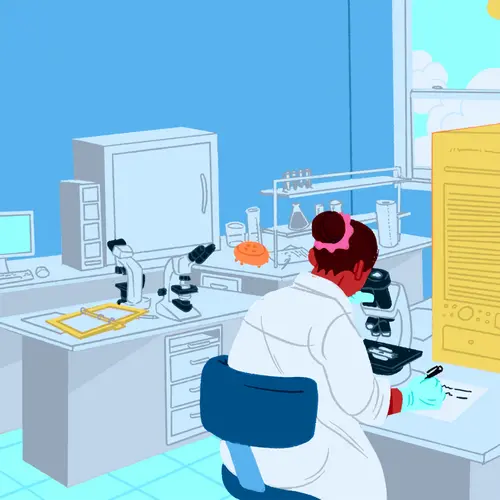Complementary medicine can help you manage some of the emotional and physical side effects of your cancer and its treatment. Here's a rundown of a few treatments you might use. This chart includes integrative treatments with the best evidence to show that they work as well as the ones that are the most widely used.
This type of treatment should not replace traditional medical care. Instead, you should use these therapies along with chemotherapy, radiation, surgery, and other treatments your doctor prescribed.
Talk to your doctor before you try any complementary therapies. Even "natural" therapies can have side effects and interactions, just like medical treatments.
Acupuncture and acupressure: These techniques insert thin needles or apply pressure to certain points on your skin.
How do they help? Evidence suggests they can ease cancer pain as well as nausea and vomiting from chemotherapy.
Are they safe? Both are safe when done by a qualified provider. Side effects are usually minor. They include pain at the needle site, fatigue, and infections. Talk to your doctor if you’re taking blood thinners.
Creative therapies: This type of treatment includes music, dance, and art.
How do they help? They can help lessen stress, fear, and worries from cancer and its treatments.
Are they safe? Yes. Just don’t overdo the dancing if you aren’t up to it.
Biofeedback: This technique uses sensors and a monitor to help you gain control over body functions that are normally automatic -- like your heart rate and breathing.
How does it help? It may lower stress and pain and help you manage your illness better.
Is it safe? Yes, but talk to your doctor before you try it if you have a pacemaker.
Chiropractic care: In this hands-on practice, a chiropractor moves your bones and joints to improve spine alignment.
How does it help? It may help ease back pain, joint pain, and headaches.
Is it safe? Yes, but it might cause mild side effects like aches and pains or a headache. An adjustment could raise your odds of having a stroke, but it isn’t likely.
Fitness: This includes aerobic activity like walking, biking, swimming, strength training, and flexibility exercises such as yoga or tai chi.
How does it help? Exercise lowers fatigue, boosts mood, and builds strength. It also helps control your weight, which can make it less likely that your cancer will come back.
Is it safe? Yes, as long as you start slowly and don't overdo it. Check with your doctor before you start any new program.
Guided imagery and visualization: These practices help you use your imagination to create an image that takes your mind off your cancer.
How do they help? You might notice lower pain, stress, and anxiety. They may also help with nausea and other chemo side effects.
Are they safe? For most people, yes. Some people get more anxious when they try them, but it’s rare.
Massage: When a practitioner kneads, rubs, or presses on your muscles and soft tissue.
How does it help? Studies show massage can lessen pain, stress, and worry from cancer and its treatments. It can also boost your mood.
Is it safe? Mostly. But don't get a massage if you have low blood counts, lymphedema, or fluid buildup in your arms or legs. Avoid areas of skin that are bruised or have been exposed to radiation. If you have bone cancer, ask the massage therapist to use light pressure.
Meditation and deep breathing: You focus on a single thought or word -- or nothing at all. Breathing deeply in and out can help. You can also repeat a word or phrase, called a mantra, while you do it.
How do they help? It can relieve stress and make you feel better overall. Meditation can help with pain and nausea from cancer treatment.
Are they safe? Most of the time, yes. But talk to your doctor before you start if you have depression or anxiety. It might make these conditions worse.
Progressive musclerelaxation: In this technique, you’ll switch between tensing and relaxing your muscles.
How does it help? It can ease your pain and anxiety and help you sleep better.
Is it safe? Yes
Reflexology: You or a practitioner can apply pressure to your hands and feet to help you relax.
How does it help? It may help with pain and anxiety. It could boost your mood.
Is it safe? Yes, but your feet might get sore. Check with your doctor first if you have weak bones, arthritis, or other health problems.
Reiki: This touch therapy realigns your body’s energy balance.
How does it help? It can make it easier to manage pain, stress, and worry.
Is it safe? Yes
Supplements: These are vitamins, minerals, and herbs that you can take as a pill, tablet, capsule, or liquid.
How do they help? They may ease the symptoms of cancer or the side effects of treatment.
Are they safe? Some supplements can cause side effects or prevent your cancer medicines from working like they should. Don’t take any product unless you ask your doctor first.
Yoga and tai chi: These specific poses or sets of movements can be combined with deep breathing.
How do they help? These programs may ease stress, anxiety, and fatigue, and help you sleep better.
Are they safe? Yes, but check with your doctor before you try them.

